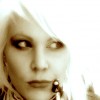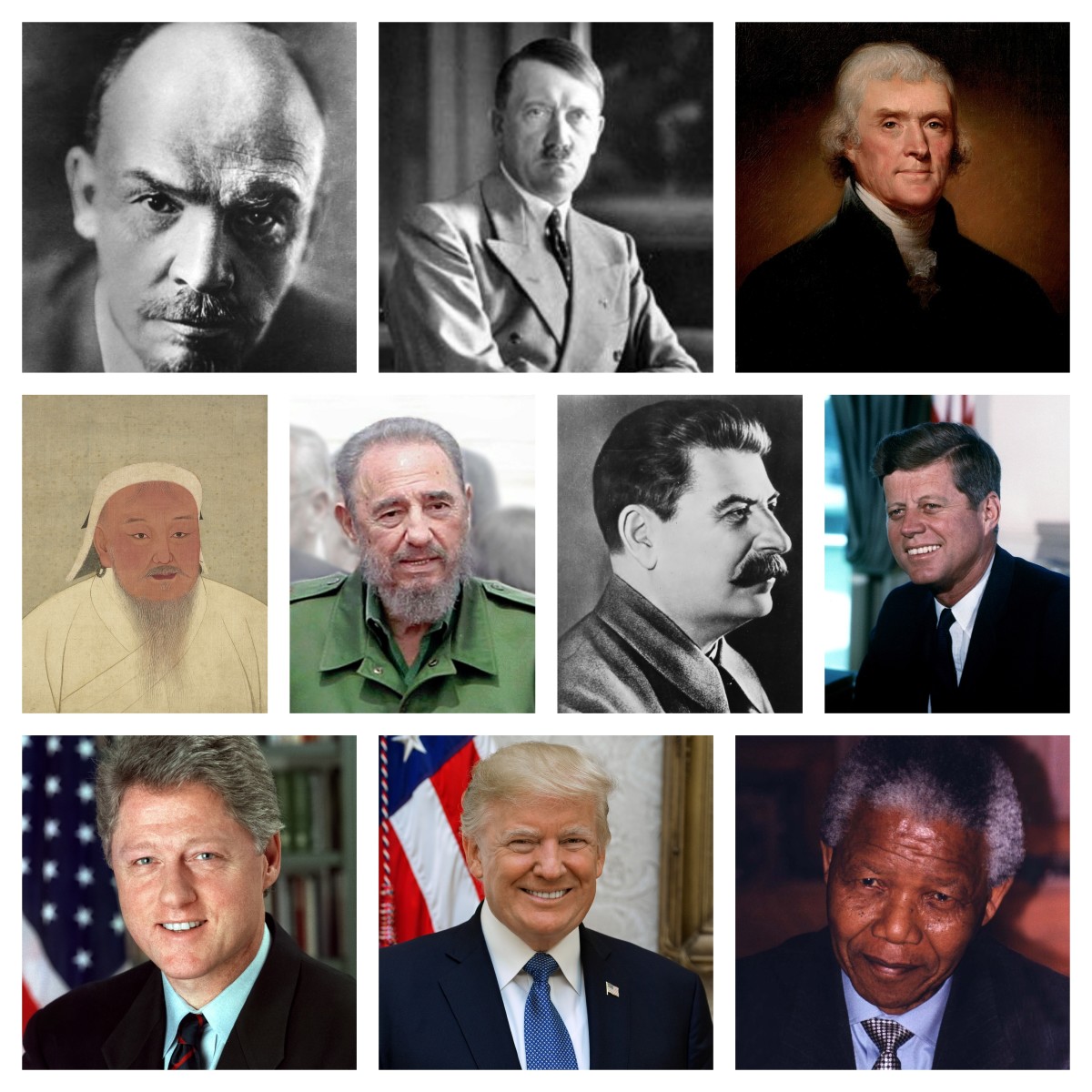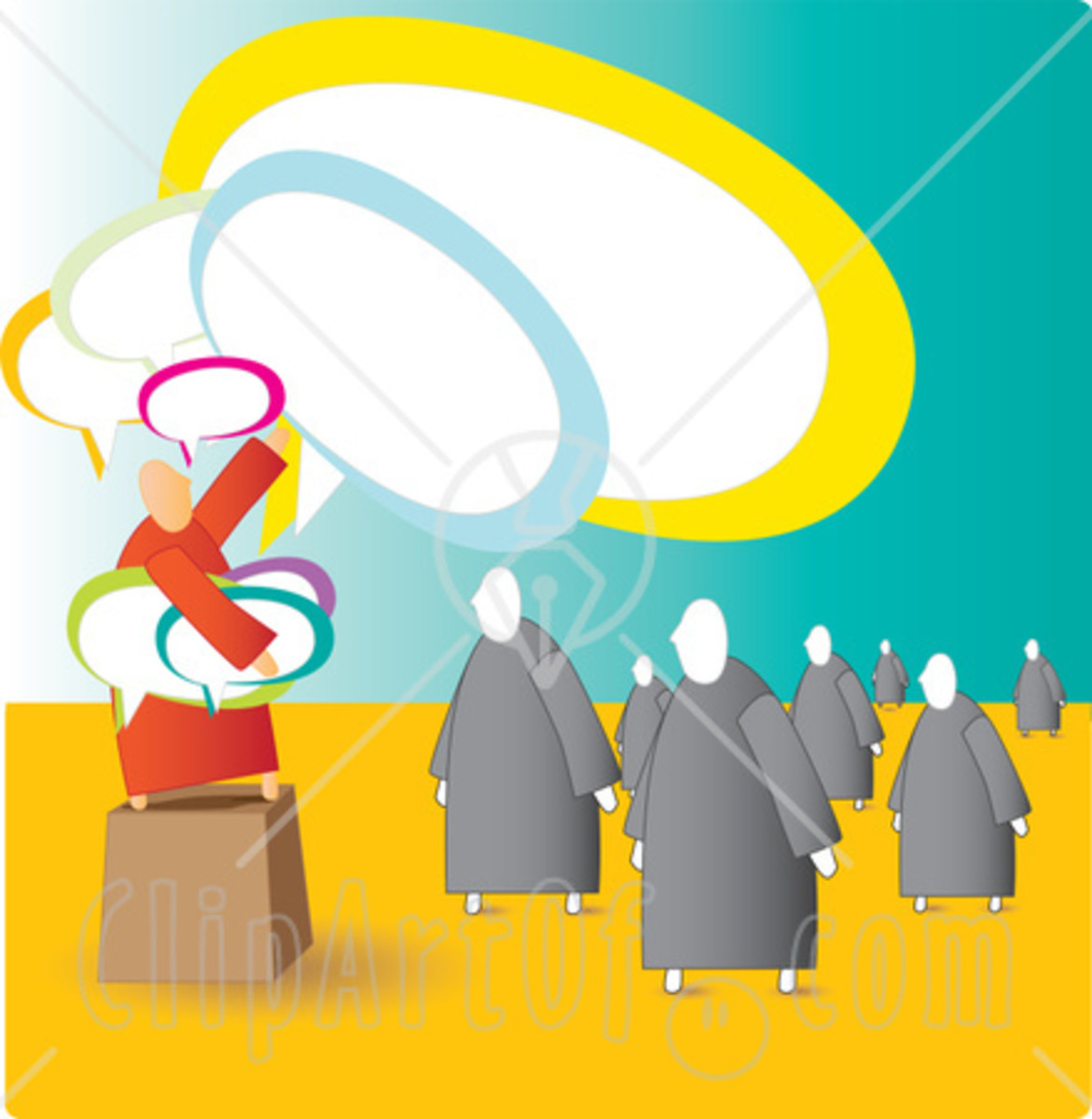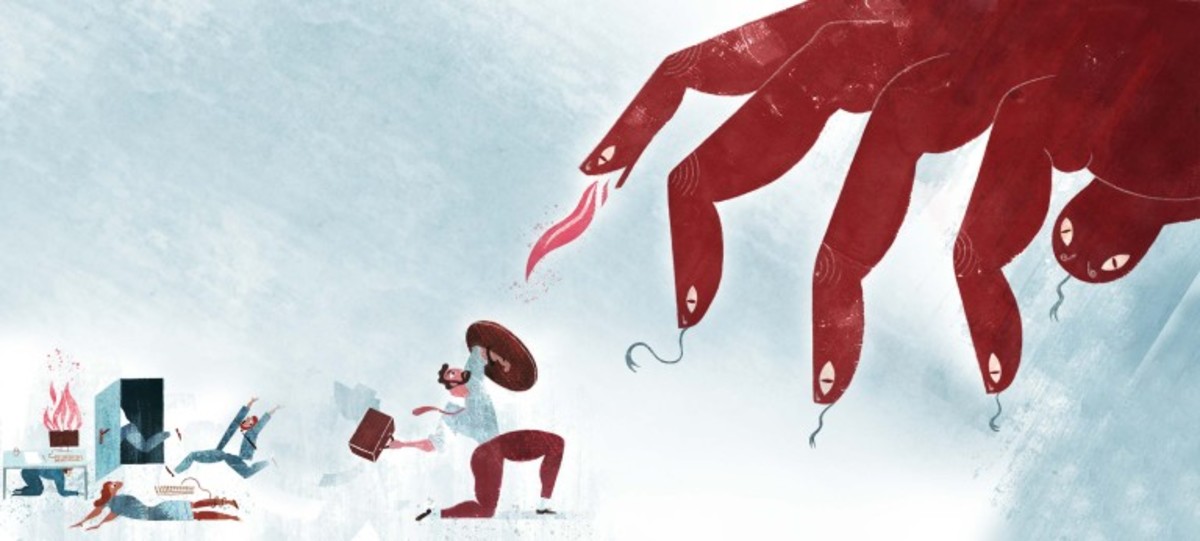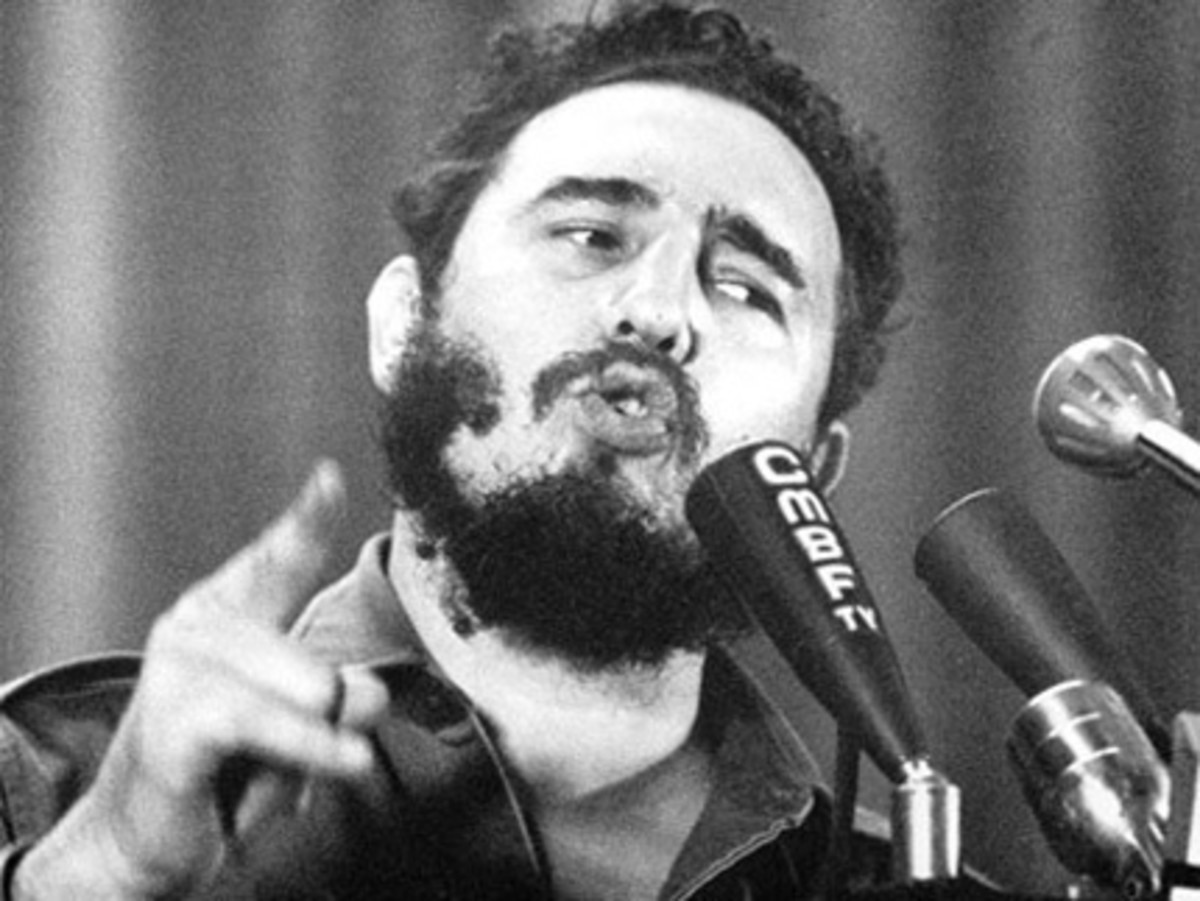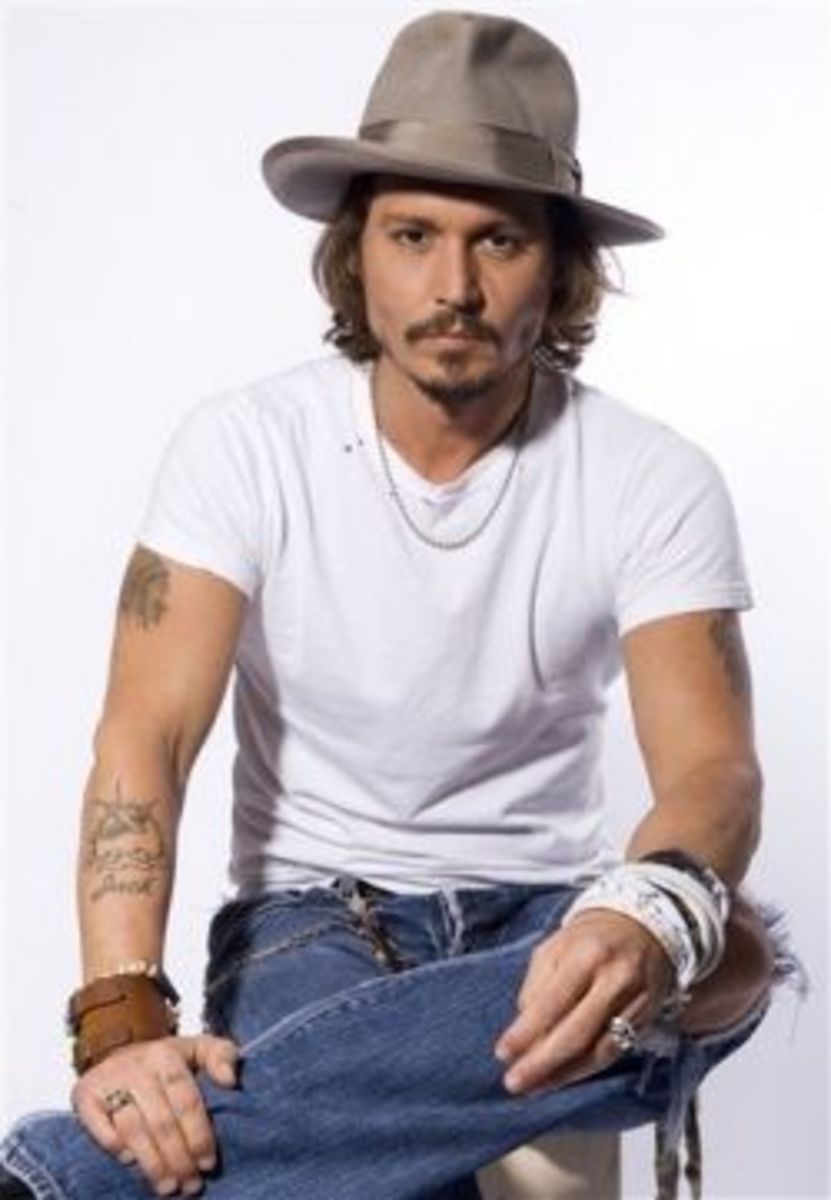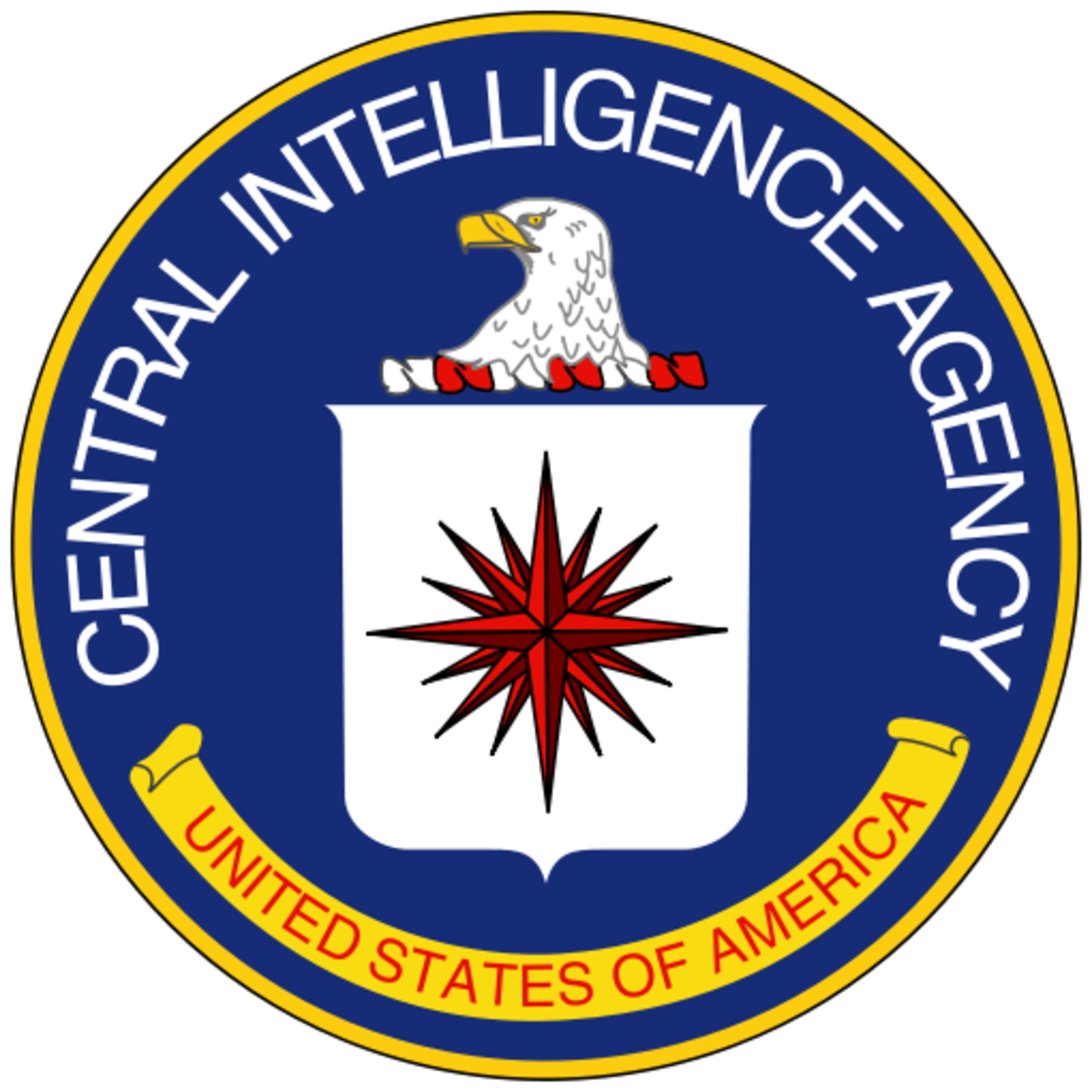Che Guevara and Fidel Castro: a study in the definition of leadership and the legacy that follows
Two notorious leaders in Cuba’s history, Che Guevara and Fidel Castro, shared the love of a country, the vision of a revolution, and the power of leadership. One goes down in history as a heroic revolutionary who became a martyr for his cause; the other, as a ruthless dictator who deprived his citizens of basic human rights. These two men fought side by side, with the same ideologies and with the same devoted followers. How did the history of the revolution that both men fought for, and the leadership styles they exhibited throughout their time, create their own unique legacies? To this day, Che Guevara is iconized by many throughout the world, while Fidel Castro’s name seems synonymous to many to evil and repression. Discovering why these two revolutionaries developed such contrasting images in the eyes of the world can teach us about the subtle line drawn between a hero and a villan. By discovering what these two leaders shared, and how they created and navigated the paths that built their infamous legacies, we can attempt to learn why so many view Che Guevara as a "good" leader, and Fidel Castro as a "dark" leader.
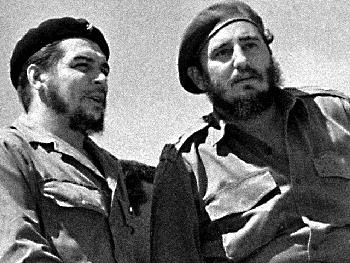
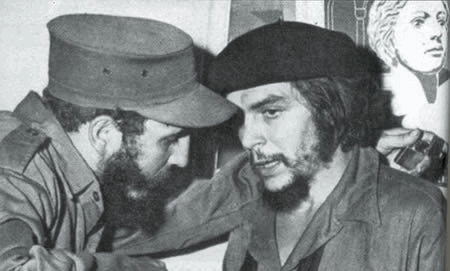
While the definitions of a “good” leader and a “dark” leader are numerous and quite relative, I will use my own definitions and assumptions of each assignment, and analyze how Guevara and Castro compare on leadership characteristics. Pertaining to the following article, I will define a “dark” leader as: a leader who systematically demonstrates behavior that violates, neglects, harms, or destructs their followers and/or organization and organizational goals; or a leader that creates and/or leads a destructive organization or mission. A “good” leader is defined as: a leader who systematically demonstrates behavior that supports the goals and vision of their organization, and produces results that create respect, admiration and/or support from their followers. In addition to personal characteristics owned by the leader, other important factors in the legacy and interpretation of these men is the followers they gained and the environment they led in. In the article The toxic triangle: Destructive leaders, susceptible followers, and conducive environments (Padilla, A. Et. al., 2007), destructive leadership is described as possible when there is a “confluence of leader, follower, and environmental factors” (p 176). I will go further to suggest that this is also true when describing constructive leadership. In order to have success, devotion, and positive results, a leader must have followers willing to support their vision and an environment that supports their movement. I would like to discuss all of these components, finding the similarities and differences in those surrounding both Guevara and Castro, and attempt to identify why the world sees these two men in such a different light. While the military history shared by these two men is extensive, I will focus less on the timeline of their revolution, but on the documentation and observations of leadership style and attributes during their leadership careers.
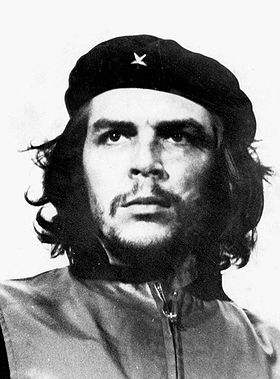
El Che
“A man of profound ideals, a man in whose mind stirred the dream of struggle in other parts of the continent and who was, nonetheless, so altruistic, so disinterested, so willing to do the most difficult things, to constantly risk his life...Che was an incomparable leader” - Fidel Castro (as quoted in Sandison, p 65, 1997).
In Rosario, Argentina, June 14, 1928, Ernesto ‘Che’ Guevara was born to aristocratic and extremely liberal parents. From a young age, Che’s parents encouraged political question and debate. Although Che’s family was that of a higher class, his father taught him to see no boundaries between social status and class. Che was known to be intelligent and witty from a young age, and took on his first leadership role as a young teenager, leading a gang of street urchins (Sandi-son, p 16, 1997). Che’s childhood is filled with moments of rebellion and revolt towards perceived injustices, which comes as no surprise when we see the revolutionary leader he became.
Intelligent, and filled with a desire for equality and justice, Che also displayed heightened emotional awareness and empathy at a young age, “Heading an ostentatious funeral procession of gang members thought the streets of Alta Gracia, Che delivered an emotional, often tearful eolugy to his dead pet before he allowed the handmade coffin to be lowered into the grave they’d dug in a patch of scrubland” (Sandison, p 18, 1997).
In 1947, Che began medical school at the University of Buenos Aires, despite his father’s wishes for him to join him in his construction business. In between school breaks, Che would travel all over Latin America on a motorcycle with a friend of his. It was these travels that are said to have inspired him to fight for social change and freedom from economic oppression. The last trip he made, in January of 1952, was said to “change the direction of Che Guevaras life forever, providing him with damning proof that the continent of South America was in desperate need of reform, and that armed revolution was the only way to achieve it” (Sandison, p 20, 1997).
In 1955, Che Guevara was introduced to a young revolutionary named Fidel Castro. “To observers it seemed as if Fidel Castro and Che Guevara ‘recognized’ each other as kindred spirits - even long-lost soul brothers - from the moment they were introduced” (Sandison, p 52, 1997). Che would take on a position as a medic in Fidel Castro’s army, built to overthrow the U.S.-backed president, Batista, in Cuba. While fighting with Fidel’s army, Che’s strength, bravery, devotion to his cause, and prioritization of the revolution above himself, became apparent, “Despite being wounded in the neck and chest, Che managed to crawl to the cover of the canefield and drag himself towards Castro’s position. It was only the first of a number of times that his bravery, and his apparent disregard of personal safety, would culminate in injury” (Sandison, p 56, 1997).
Che spent two years fighting with Castro’s army in Cuba. In these two years, Che would prove himself a brilliant military tactician and guerrilla warfare strategist, writing books on the topic while in Cuba. Che was promoted quickly through the ranks, not only due to his brilliant military mind, but the devotion of his subordinates. Che’s respect and empathy towards his comrades and troop members made him quite popular and admired throughout the forces, “gaining both their loyalty and affection by making time to listen to their problems and entertaining them during breaks” (Sandison, p 58, 1997).
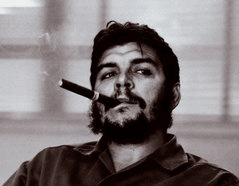
Che was also responsible for the organization of a printing press in their barracks, and the publication of a newspaper documenting their ideals, stories, and cause. Being able to manage this, in addition to the military duties, was the mark of an incredible man. He won the hearts of media around the world, for his desire to maintain a publication documenting their devotion of their cause, amidst the battle and bloodshed of the revolution. (Sandison, p 58, 1997).
In January of 1959, Fidel Castro’s army, led also by Che Guevara, succeeded in their mission to overthrow Batistá. Fidel Castro was appointed Prime Minister of Cuba in February, and appointed Che Guevara as the head of the military. Fidel and Che were now in charge of punishing the remaining Batistá loyalists and soldiers, and Che was put in charge of trials and sentencing. After Castro’s nationalization of all Cuban land (and the expectation that the U.S. would halt all trade with Cuba thereafter) Fidel put Che in charge of traveling socialist states of the world, in search of new partnerships to help maintain Cuba’s economic security (Sandison, p 77, 1997). In October, Che was named the chief of the Industrial Department.
In Che’s government posts and diplomatic missions, he continued to inspire and garner affection from his supporters. He would still dress in his military uniform, casting the infamous image he was known for wherever he travelled. Che was appointed Minister of Industry in 1961, and briefly resumed military duty once again during the operation against the Bay of Pigs invasion in April of 1961 (Sandison, 1997).
Che maintained close ties and a devout interest with revolutionaries and social injustices around the world. Che delivered many speeches at the United Nations and elsewhere, scolding countries (such as the U.S.) for inappropriate military actions and calling the cry of revolution. After traveling around the world, Che would return to Havana, Cuba, in 1965, not to be seen by the public again until after his assassination in October 1967 (Sandison, 1997).
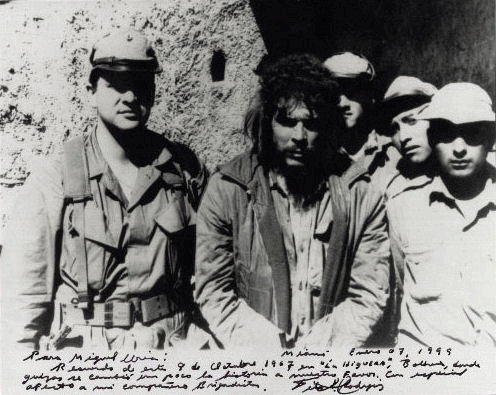
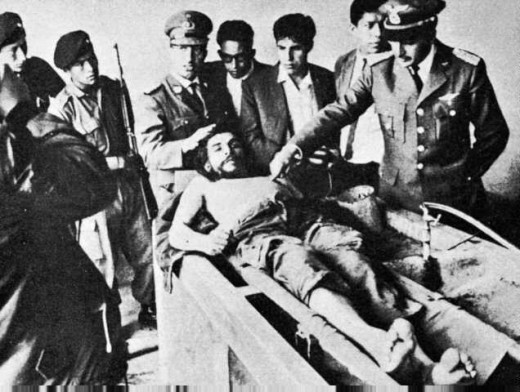
Che and his guerrilla army were captured by Bolivian forces, and Che was soon after executed. His bullet-ridden body was then photographed, in images described as “christ-like,” to document his death for the world to see. Che immediately became a fallen hero, a martyr, sacrificing his life in the battle to free the world from oppression.
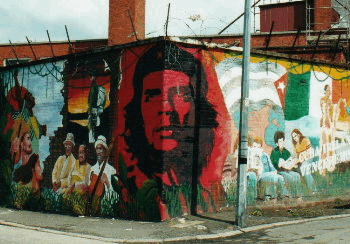
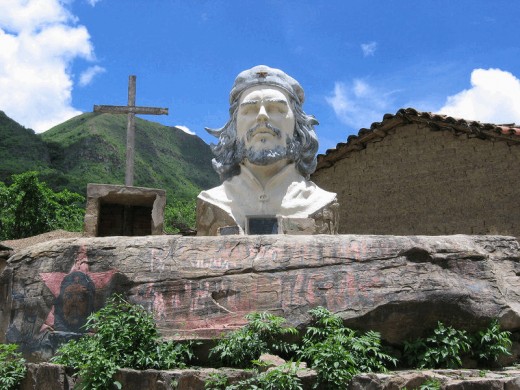
"Che was the most complete human being of our age."
Jean-Paul Satre
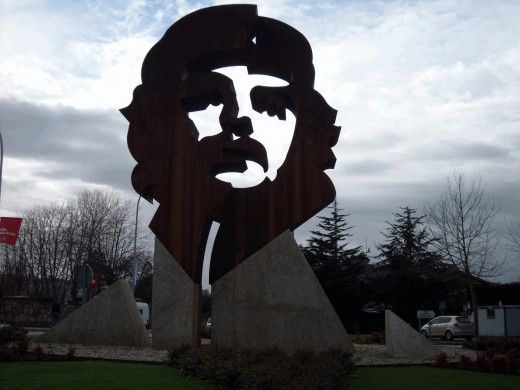
"Che's life is an inspiration for every human being who loves freedom. We will always honor his memory."
Nelson Mandela
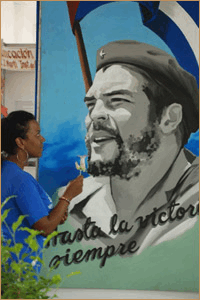
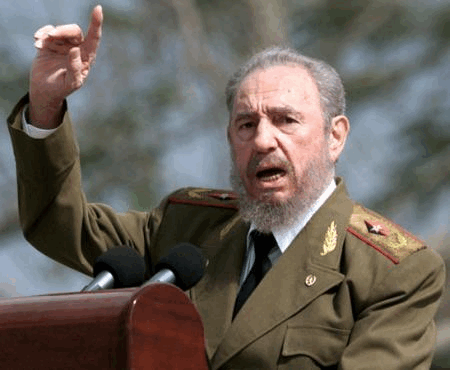
Castro
“[Castro is] an extraordinary man. He confronted and solved the most impossible problems. He had an unshakeable faith that once he left exile in Mexico and arrived in Cuba he would fight, and would win that fighting. I shared his optimism. It was imperative to do something, to struggle, to achieve” - Che Guevara (as quoted in Sandison, p 54, 1997).
Fidel Castro is thought to have been born in Cuba on August 13th, 1926. His family were landowners, and Fidel received a good education growing up. Fidel grew up in Santiago de Cuba, a city filled with working class peasants and farm workers. Growing up with these children as playmates, he saw the existence and outcomes of social hardships in Cuba (Skierka, p 9, 2004). At a young age, Fidel was described as showing “strength of will...self-assertiveness...and refusal to compromise” (Skierka, p 11, 2004). Fidel’s first brush with battles of social injustices happened when he was just 13 years old. He attempted to organize a strike for the sugarcane workers on his own father’s farm, making the accusation that his father was exploiting them (Skierka, p 12, 2004).
Fidel’s brother, Raul, remembers him displaying many of the qualities leading to his role as a revolutionary, at a young age,
”He dominated situations...And, every day, he would fight. He had a very explosive character. He challenged the biggest and the strongest ones. And when he was beaten, he would start it all over again the next day. He would never quit” (as quoted in Skierka, p 14, 2004).
When Fidel was a child, his temper, stubbornness, and general bad behavior led to his father having to take him out of grade school (Quirk, p 12, 1995).
Castro went on to excel at sports, especially baseball, and was known as an excellent public speaker as well (even winning an award for it in school). He went on to study law at the University of Havana. While Fidel showed disinterest in his studies, and had yet to hold a true political or social ideal, he was remembered as being obsessed with leadership in general. Castro became obsessed with Cuban heroes, hoping to gain a political position in Cuba as a means to become the ‘leader’ he aspired to (Quirk, p 24, 1995). Failing at his first attempt to gain an elected position in school, Fidel joined a Socialist Revolutionary Movement in the summer of 1947, with a goal to overthrow the dictatorship of Trujillo of the Dominican Republic.
Fidel graduated from University, but failed to make anything substantial out of his degree. His passion was to gain power and notoriety, and he was fascinated with politics and military actions as a result. After the suicide of Eduardo Chibás, a Cuban politician determined to expose the corruption in Batistá’s regime in Cuba, Castro was inspired and armed with a call to action. “For weeks Fidel Castro kept busy tracking down information on political corruption at the highest level. He was determined to create a major scandal that would call attention to his name before the party candidates were chosen for the 1952 elections” (Quirk, p 33, 1995).
In 1952, Castro found like-minded individuals intent on spreading the word of corruption in Cuba, and they persuaded by Castro to take him on as their leader. By 1953, with the fall of the University in Havana under a corrupt government, more insurgents presented as students were left with no school. Fidel took his devoted followers to Santiago, Cuba, where he planned on gaining weapons and ammunition to put together a military force, ready for uprising against the government. He organized a hasty, overly confident and unsuccessful attack on army barracks in Moncada, Santiago, and was captured and imprisoned as a result. Once Fidel and his followers were out of prison, they organized in Mexico, where they planned their revolution against Cuban leader Batistá (Quirk, 1995).
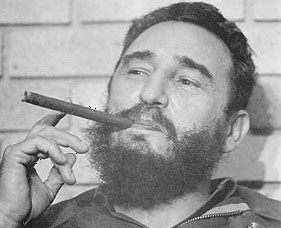
Castro and his supporters raised money for weapons, ammunition and food. They spent two years marching through Cuba, with their destination Havana, and the ceding of power by President Batistá. After Castro’s troops succeeded in their mission in January of 1959, Castro became the Prime Minister of Cuba.
In power for almost three decades, Castro’s political career after the Cuban revolution is extensive. He nationalized all U.S. property in Cuba, and in turn, the U.S. established an embargo and cut off all trade relations with Cuba. In 1961, Castro declared Cuba a socialist state. This resulted in abolishing all elections, ensuring his position of power stay in tact. Castro banned all independent newspapers and television stations, and prohibited the public from reading or viewing any outside media programs or publications. Castro was also responsible for the establishment of concentration camps throughout Cuba, where members of society he deemed fit would be sentenced to (including homosexuals) (Gonzales, p 285, 2002).
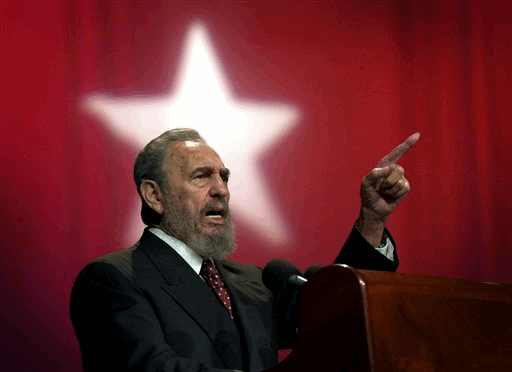
The Good, the Bad and the Martyr
As we can see from their lives in synopsis, Che Guevara’s story was cut short, long before Fidel Castro’s true legacy began. Both men shared the same vision for a free Cuban society, although it can be argued, for different reasons. Fidel’s reign of human rights violations and the censorship of information did not begin until after Guevara’s death. This could make one wonder how Guevara’s legacy would have changed had he been part of Fidel’s political cabinet during such crimes against civil liberties and human rights.
Would Che have also abandoned his original creed of a truly free and liberated society, with equality for all?
Would Che have spoken out against his former commander, and begin yet another revolution?
Could Che have kept Castro from committing the acts he is condemned for?
Maybe Che too would turn into a ruthless leader, hated by the free world. There is no question that Che’s early execution and publicly and crudely displayed corpse turned him into a sympathized figure iconized around the world. Many have said that had Che stood public trial for executions he ordered during his reign, his public image would have turned out much different. The two leaders shared many qualities, that are most likely seen in leadership in general. I was surprised to see how few differences appeared in their careers.
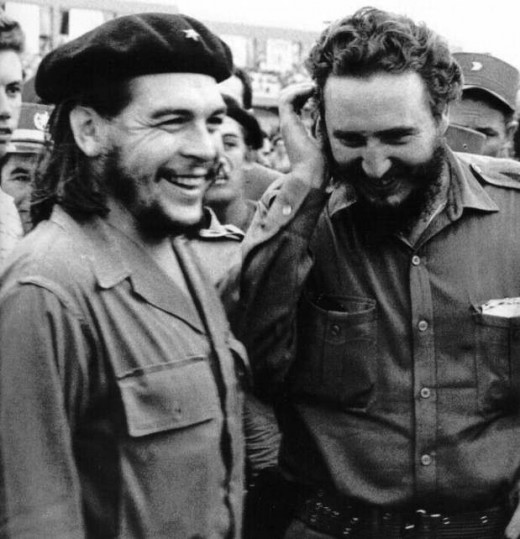

One of the biggest differences in these leaders is their vision; what fuels the desire they have to reach their ultimate goal. As mentioned earlier, Fidel was said to have been obsessed with power from a young age, wanting to be in the political and military arena, only because he could then lead, for the sake of leading, “Fighting the battle, any battle, was more important to him than the battle itself” (Quirk, p 24, 1995). Castro was a disinterested youth, not very good in school, known for his bullying and disobedience, and was remembered by his classmates as saying, “his greatest ambition was to ‘have a line written about me in Cuban history’” (Quirk, p 21, 1995). This quality so definitively identified at a young age, could have predicted Fidel’s fall into toxic leadership.
The Allure of Toxic Leaders identifies many toxic qualities that “feed toxic leadership,” one of them being “ insatiable ambition that prompts leaders to put their own sustained power, glory, and fortunes above their followers’ well being” (Lipmen-Blumen, p 21, 2005). This desire for power, with no vision, is a negative attribute that will only ensure a negative outcome.
With no vision or goal, where are boundaries? Where is strategy?
“..realizing one’s visions, creating systems, and leading human beings in pursuit of a goal: all of these activities require that a leader have a certain feeling of potency” (Lapierre, p 177, 1989). Castro was known for his inability to come up with intelligent and thought-out strategy. “So long as he was on the move, so long as he talked and read books, so long as he had no fixed headquarters or office, he could not be compelled to make difficult decisions” (Quirk, 1995, p. 161). He was known for his long-winded speeches about the revolution or social status, monologues that could go on for hours, so long as he had an audience.
This narcissistic behavior is a related attribute that could foreshadow the impending toxicity of his leadership. In Kets de Vries book on leadership, he discusses the outcomes of such behavior in a leader,
“For these leaders, power and prestige are more important than commitment to performance...Their main concern is the preservation of their own position and importance, and they are contemptuous of the needs of others and of the organization...their consequent exclusion of others from policy making, intolerance of criticism, and unwillingness to compromise inevitably have serious negative effects on the organization” (Kets de Vries, p 23-24, 2003).
“A casual difference of opinion might result in a childish tantrum—with much shouting on his part and pounding on the table. He overwhelmed his listeners with the sheer volubility and noise of his arguments. His associates soon learned the futility of having opinions of their own” (Quirk, 1995, p. 89).
Castro was known for rejecting all criticism with a ferocious temper (Quirk, 1995, p. 105), and his narcissistic behavior and unyielding desire for power is most likely what led to his declaration of Cuba as a socialist state, eliminating voting rights, and the banning of outside information that could question his authority. This could possibly have been the beginning of his complete corruption of power,
“Power tends to corrupt and absolute power corrupts absolutely” (Lord Acton, as quoted by Padilla, et. al., p 176, 2007).
Che Guevara, in contrast, was fighting in the revolutionary movement to fulfill an ideology and the quest for social justice. A friend of Che’s recalled, “Che seemed to feel personally responsible for all the injustices he’d witnessed, full of fight and devotion to some inner ideal” (Sandison, p 50, 1997). As much of a leader as Che became, he began also as a follower, of Fidel Castro. He was looking for a ‘noble vision,’ and Fidel was able to promote this ideology, even though it was probably not his true passion.
Che did not seem to possess the overly narcissistic behaviors that Fidel so overtly did;
“Guevara was at his best talking with people, not against them, seeking to convert them by reasoning and logic. He provided a much needed intellectual leavening to Fidel Castro's charisma. He proved to be wise beyond his years. Ten months younger than the Cuban, and his intellectual superior, he was content to accept a secondary role. He never argued with Castro. He seemed content to sit quietly in a corner, while Castro occupied the center of everyone's attention" (Quirk, 1995, p. 89).
These qualities in Che, his true desire to meet the goals of better life for the people of the world, and his disinterest in power, and interest in action and ideas, defines him more under our definition of a ‘good leader.’ “As soon as the revolutionists took power in Cuba, Che started working passionately for the reconstruction of the island’s society...At the moment that his ideal concept of society confronted reality, he began his transformation into a leader” (Goethals, et. al., p 640, 2004).
It could not be argued that Che Guevara was an ideological leader. His passion was the revolution, and the freedom of all that were oppressed. Although later study of Fidel Castro may suggest his true passion was power, and not an ideology, I believe he was perceived as an ideological leader at the time of his initial reign and the fight for a ‘free’ Cuba. Furthermore, I think Fidel’s true magnetism was due to his charismatic nature, unarguably documented throughout countless texts about him.
Both of these men have blood on their hands; as is what comes with the territory when being a “freedom fighter.” Violence was a part of their job, a part of their mission, unavoidable, some would say. We have discussed Fidel’s violation of human rights and safety during his presidency, although accusations of extreme first-hand violence are not discussed, as the ordering or approval of it is by others. In contrast, there are numerous accusations of Che Guevara as a mass murderer among many.
“There was, however, a dark and unforgiving side to Che which the journalists did not see. A martinet who candidly admitted that he once shot a man who had fallen asleep while on guard duty, Che would punish even the slightest infringe-ments...Transgressions or treachery deserved only the most severe reprisals and Che ordered, with no hesitation or sign of regret, the summary execution of a number of men who were revealed as traitors or spies” (Sandison, p 58, 1997).
In Che’s memoirs Episodes of the Cuban Revolutionary War, he would say “War is harsh, and at a time when the enemy was intensifying its aggressiveness, one could not tolerate even the suspicion of treason” (as quoted in Sandison, p 58, 1997). The existence of such violence in Che’s leadership career could be looked at as a ‘dark side’ trait. The presence of a behavior that causes harm to his followers, or even to others outside of the organization.
Alternatively, one could argue that this violence may not be a toxic quality, due to the circumstances of the revolution. In the article The sources of leader violence: A comparison of ideological and non-ideological leaders, the authors analyzed variables that may present themselves in certain circumstances, explaining the existence, or propensity towards violence in a regime, “Ideological leaders will be more prone to violence than charismatic and pragmatic leaders only with respect to select targets” (Mumford, et. al. p 220, 2007). This may explain why a leader like Che had more hands-on violent accounts than that of Fidel, who is described more as a charismatic leader.
“Charismatic political leaders who are motivated by personalized power are common to developing nations - in this case, Cuba. Cuba’s political administration is characterized by a single charismatic officer - Dictator Fidel Castro - with a strong personal following” (Bream, p 132, 2004). Castro’s followers fell victim to this magnetism and drawl, and many paid the price when he took many rights away from the country. “Fidel Castro’s personal rule over Cuba serves to illuminate another dark side of charisma. Although Castro had promised a return to constitutional rule and democratic elections along with social reforms, he used his control of the military to consolidate his power” (Bream, p 134, 2004).
This also brings up the discussion about the environment that both Che Guevara and Fidel Castro were surrounded by during the course of their leadership. Revisiting the article, The toxic triangle: Destructive leaders, susceptible followers, and conducive environments, we can observe that Cuba’s political and social environment proved a conducive environment for a charismatic leader to gain power:
“Crisis and governmental instability were the norm...most of the population, including the large middle class and the larger poor and uneducated segments, chafed at the violence and corruption and resented the status quo. A long history of instability and inef-fective governmental institutions made the Cuban population ripe for revolution” (Padilla et. al., p 188, 2007).
In Lipmen-Blumen’s text, the “common enemy” is a tactic used by many intelligent leaders to gain a united follower base, “ With mind-numbing regularity, the visions of toxic leaders point to enemies and scapegoats as the wellsprings of all their followers’ problems. Expunging those poisons, these leaders promise, will restore our well-being and purity” (Lipmen-Blumen, p 67, 2005). Because Che and Fidel both came into a leadership role at the same time, this can be said true for both of them. Again, a huge factor in the differences of their legacies, and their story, is that Fidel’s career lasted decades beyond Che’s.
In Erin Beam’s article Personalistic Political Leadership in Castro’s Cuba, she discusses two theories of power motivation: socialized and personalized.
“Socialized power is motivated by a desire to cooperate with others and to work with them rather than dominate or control them.Personalized power..is motivated by a wish to dominate others, which is reflected in an excessive concern with status. Those leaders who are motivated by personalized power are apt to use power to aggrandize and satisfy their strong need for esteem and eminence” (Beam, p 132, 2004).
It is this discussion by Erin Beam that I think most defines the difference in leadership styles of these two revolutionaries. As was discussed earlier, Castro’s driving inspiration and motivation behind his revolutionary ways was his inherent desire for power. This ultimately led to a leader who served only in their own best interest, to maintain their power and authority, and exclude any factors that may threaten it. Castro’s motivation of power was personalized. We also know now that Guevara was motivated by his inherent desire to fuel a revolution that would free the oppressed in South America, and all over the world. He fought side by side with his revolutionaries, he would work in canefields all day with the peasants and refuse pay. He was deeply empathetic to the social struggles of his fellow human. Guevara’s motivation of power was socialized.
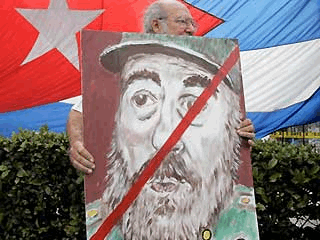
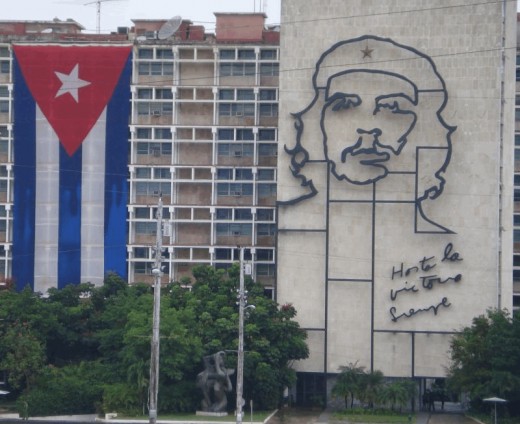
It would be interesting to know, had Guevara and his socially motivated leadership, survived his trip to Bolivia, how would the outcome differ from Castro’s?
Castro began as a freedom fighter, just as Guevara, a father of a revolution, to free the oppressed in Cuba. Ultimately though, after commanding the devotion of so many followers, oppression never seemed to leave Cuba, “the factors giving rise to revolutions...are likely to be found in the conditions which exist in the collapse of the old regime as in those which exist before its downfall” (Huntington, p 265, 1968).
The leadership styles of these two revolutionaries differed in one main theory, their motivations behind their power.
Could this be why Che’s legacy is one of a true revolutionary hero, and Fidel’s is as a ruthless dictator?
We will never know what kind of legacy Che would have left, had his leadership lived on to today, as Castro’s has. Castro is remembered today as ruling with "a combination of fear and respect" (Montaner & Ramonet, 2007). Alternatively, “Che’s appeal is emotional. His death in Bolivia as a relatively young man created Che as secular Christ, the man who took upon himself the sins of the world and gave his life for the cause of the oppressed” (Hilton, 2007).
After studying the lives and personalities of these two leaders, it is clear to see how an influential leader, with a ‘noble vision,’ and a society in crisis, can lead to both revolution, and also to loss of freedom. Had Che’s leadership reign lasted as long as Castro’s, it is quite possible that he could have been led astray from his ideological views and followed in Castro’s leadership ways. His social awareness could have saved him or could have been abandoned. Had Castro’s leadership lasted only to the end of the Cuban revolution, he could possibly be romanticized as Che is today. His absolute power, along with narcissistic qualities and the lack of a socialized motivation of power, led him into the toxic leader that the world demonizes today. We can see by comparing these two leaders, there is a very fine line between who can be classified as “good” and “bad.”
Do you think Che and Fidel had similar leadership styles?
How do you think the legacies of Che and Fidel have played out over time?
References
Bream, E. (2004). Personalistic Political Leadership in Castro’s Cuba. Leadership Review, Fall(4), 132-137
Dubois, J. (1959). Fidel Castro: Rebel, Liberator, or Dictator? Indianapolis: Bobbs-Merrill.
Goethals, G., Sorenson, G., Burns, J. (Eds). (2004). Encyclopedia of Leadership. Thousand Oaks: Berkshire Publishing.
Gonzalez, S. (2002). The Secret Fidel Castro. New York: Spooks.
Hilton, I. (2007). Che: Still a messiah? Forty years after his death, Che Guevara has little to offer as a guide for making revolution. New Statesman, 136(4865), p 30.
Huntington, S. (1968). Political Order in Changing Societies. New Haven: Yale University Press.
Kets de Vries, M.F.R. (2003). Leaders, fools and impostors: Essays on the psychology of leadership. New York: iUniverse, Inc.
Lapierre, L. (1989). Mourning, Potency, and Power in Management. Human Resource Management, 28(2), 177-189.
Lipmen-Blumen J. (2005). The allure of toxic leaders: Why we follow destructive bosses and corrupt politicians - and how we can survive them. New York: Oxford University Press.
Montaner, C., & Ramonet, I. (2007). Was Fidel Good for Cuba? Foreign Policy. January-February, p. 56
Mumford, M.D., Espejo, J., Hunter, S.T., Bedell-Avers, K.E., Eubanks, D.L. & Connelly, S. (2007). The sources of leader violence: A comparison of ideological and non-ideological leaders. The Leadership Quarterly, 18(3), 217-235.
Padilla, A., Hogan, R., & Kaiser, R. B. (2007). The toxic triangle: Destructive leaders, susceptible followers, and conducive environments. The Leadership Quarterly, 18(3), 176-194.
Quirk, R. (1995). Fidel Castro. New York: Norton Press.
Sandison, D. (1997). Che Guevara. New York: St. Martin’s Press.
Skierka, V. (2004). Fidel Castro: A Biography. Cambridge: Polity Press.
